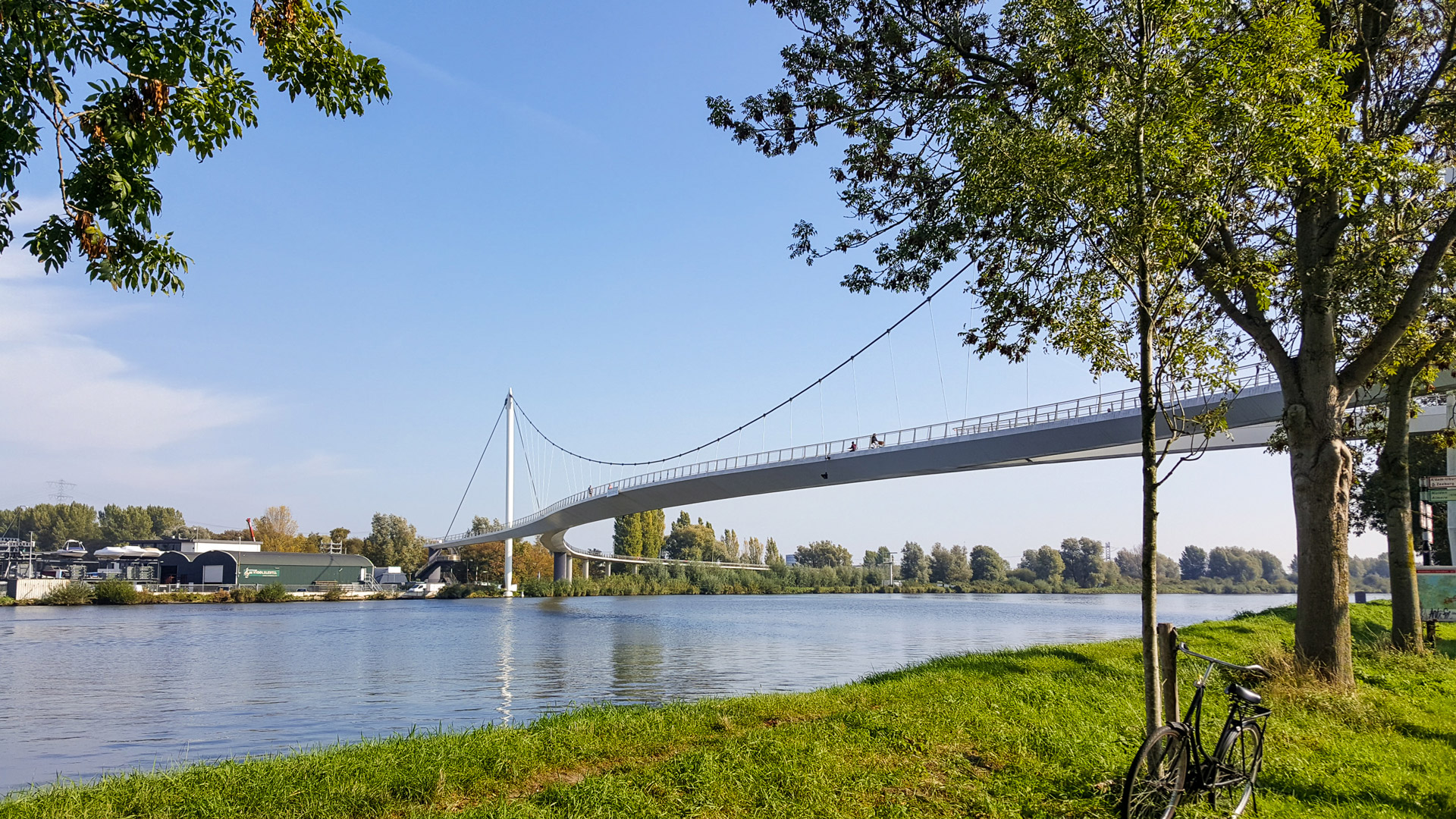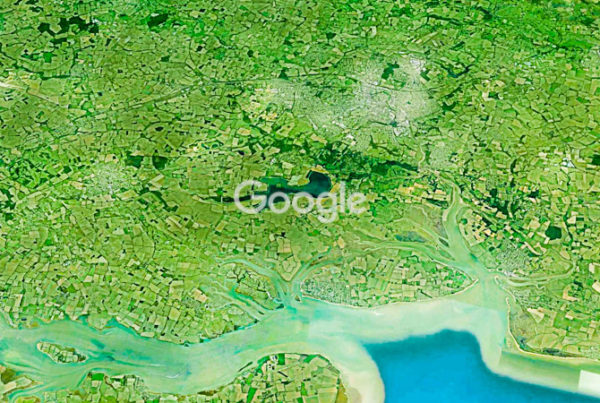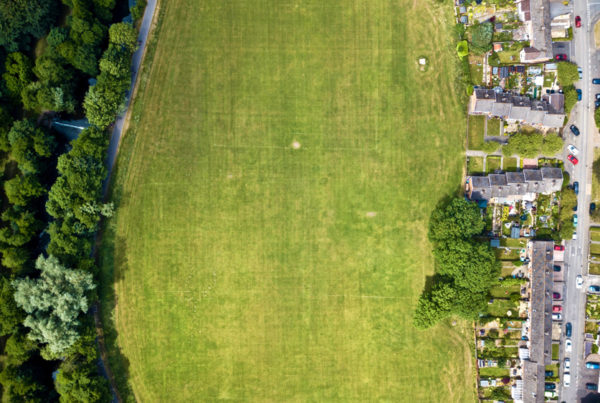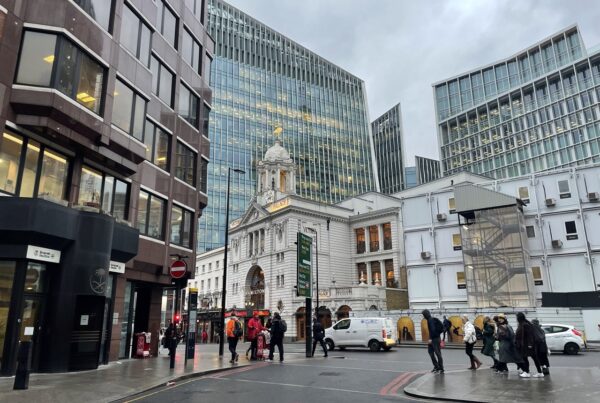Think of the Dutch and you’ll almost inevitably think of the humble bicycle. Indeed, the Netherlands and the bike are so synonymous with each other that ideas are afoot to have cycling recognised by UNESCO as central to the national identity[1]
We recently visited the Netherlands for a three day study visit. Like many people arriving in Amsterdam, the sheer volume of cyclists is quite overwhelming at first, particularly so when stepping off the train. The combination of the bicycle and the train is one of the most important strands in the country’s movement network. Row upon row of bikes greet you at most stations. These are not just bikes belonging to those cycling from home for the first part of their commute, but also hire bikes at the other end, providing for the ‘last mile’ journey from station to work.
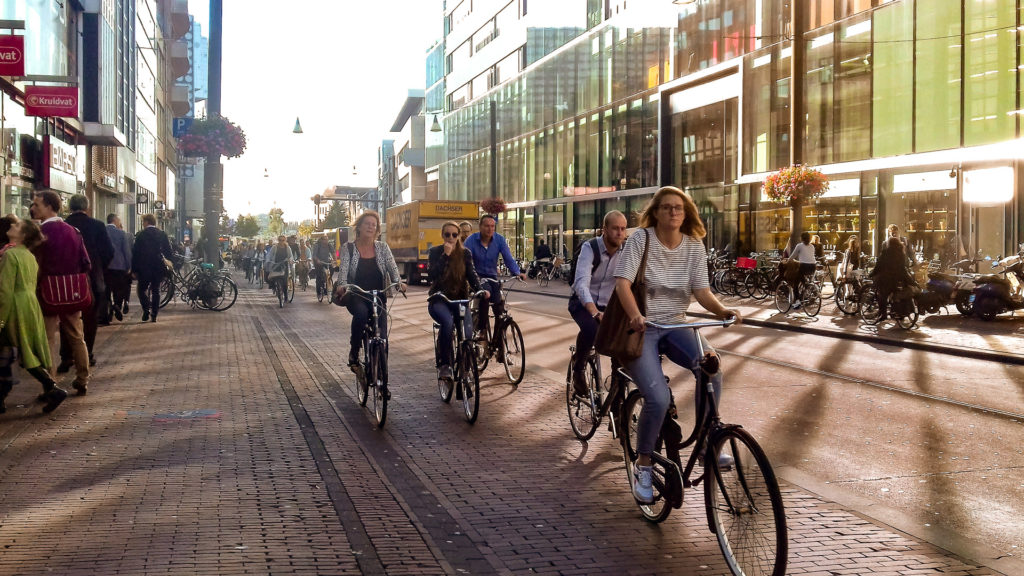
Vredenburg, Utrecht
The use of the bike for the last part of the journey is important for several reasons, and not least because, in what is Europe’s most densely populated country, and where space is at a premium, movement by bike is incredibly space efficient. It is also quick, often more so than the car, and, because the cycle network is so comprehensive, it is safe and easy to get to where you want to. It is also very green: with Dutch national rail now being fully powered by electricity generated from wind, the bike-train-bike combination allows for a completely carbon free journey[2].
In fact, the scale of movement is so big that new ideas and solutions are needed. In Utrecht, the central hub of the country through which most train services run, a new 12,500 space multi-storey cycle parking facility has recently opened, creating a seamless interchange between modes, as well as a secure (and dry) storage area for those visiting what is a rapidly growing city centre. Just don’t forget where you left your bike…

Cycle Parking at Utrecht Station
We can do this in the UK too (though nowhere on the scale of Utrecht), most notably on train services out of London Liverpool Street to Essex and East Anglia. Cycle parking facilities in Chelmsford for example are particularly impressive, providing safe and secure parking inside and out. It is perhaps more than a coincidence that the train operating company (Abellio) is Dutch…
But here is where all similarity ends. In the Netherlands, dedicated cycle paths allow for direct, safe, convenient and quick access to all parts of town. By comparison, the majority of cycle infrastructure in the UK, where it exists, is more often than not just for the brave.
”In the Netherlands, because cycling is so safe and easy, it is an activity that is undertaken by all people of all ages. It is second nature. The phrase ‘walking with wheels' really makes sense. And because it is so natural, many don't appear to appreciate just how fantastic provision is.
Jon HerbertDirector, Troy Planning + Design
Speak for example, as we did, to locals in Utrecht, and many will shrug their shoulders when you mention the new bridge (Dafne Schippersbrug) across the Rhine Canal. For many it is just a normal link in the network. For us it is an amazing feat of planning, architecture and engineering, integrating the ramp for the bridge around, up and over a new school, providing a new focal point for the community, bringing together neighbourhoods separated by the canal, as well as delivering much needed new and improved school facilities, a public park, and, importantly, a seamless connection with the rest of the city.
Cities in the Netherlands are under pressure to grow. With limited land availability, urban intensification takes a high priority. New ways of moving are being explored, but the bicycle remains front and centre. Take, for example, the new community of Ijburg, on reclaimed land in the Ijmeer. Dedicated cycle provision is built into the street network by default. But much more is done to facilitate use of the bicycle: new foot and cycle bridges provide direct connections with surrounding areas and destinations. The cycle from Ijburg to Amsterdam RAI and Zuid for example (the Amsterdam equivalent of Canary Wharf) is direct, quick and easy, with safe crossing points at junctions and dedicated tree-lined routes making use of the bike an incredibly compelling proposition.
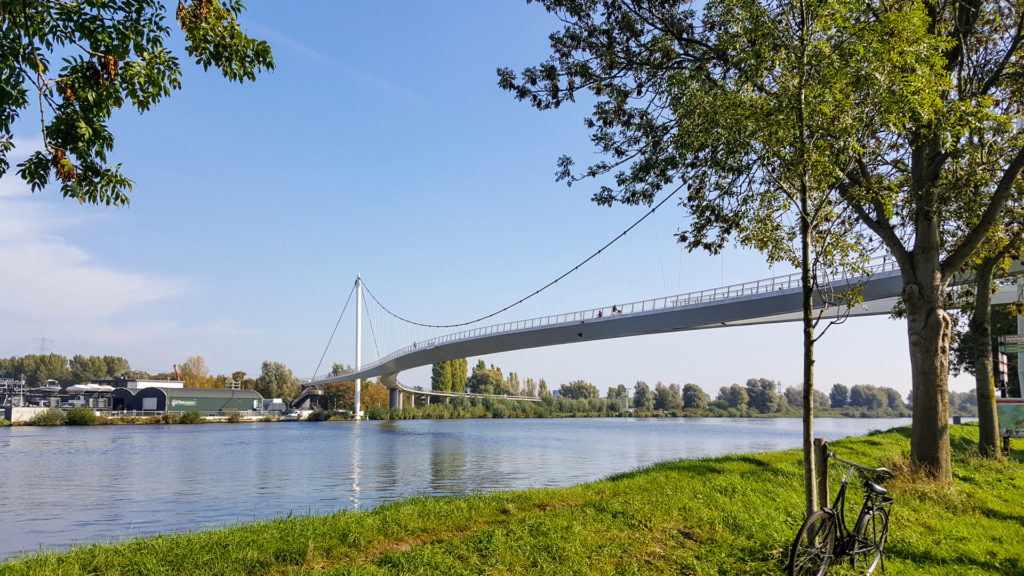
Nesciobrug, Amsterdam
It is, however, recognised that people do use the car, but if they continue to do so, at the same levels experienced today, this will cause major traffic headaches. The car is provided for in new schemes, but parking is limited and, very differently to the UK, is not provided close to the home. As such, it is more attractive to walk or cycle. The idea of mobility as service is now being extensively explored too, with car clubs promoted over use of and ownership of the private car. New technologies are being utilised as part of these services, including battery to grid charging. The EU Lighthouse project in Utrecht[3](‘Iris’) is a test bed for new ideas such as these, with a low income neighbourhood being retrofitted to provide cheaper mobility solutions and electricity supplies where they are most needed.

Dutch traffic junction
But, after three days in the Netherlands spent talking with city officials, planners and designers about growth, development and new technical solutions, the biggest lesson is perhaps what wasn’t said: ‘autonomous vehicles’. The Dutch approach, which recognises that a good transport plan is a good land-use plan, understands that mobility is about space. As we focus on different forms of car-based solutions, the Dutch approach, which has led to a series of liveable, healthy, attractive and human scale towns and cities, and where movement by foot, bike or public transport is so very easy, is surely the template for a truly ‘smart’ city.
[1] As reported by Modacity: http://www.modacitylife.com/building-the-cycling-city/
[2] See press release: https://www.ns.nl/en/about-ns/sustainability/energy/sustainable-energy.html
[3] See http://irissmartcities.eu/content/utrecht-netherlands



